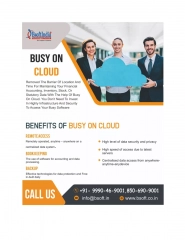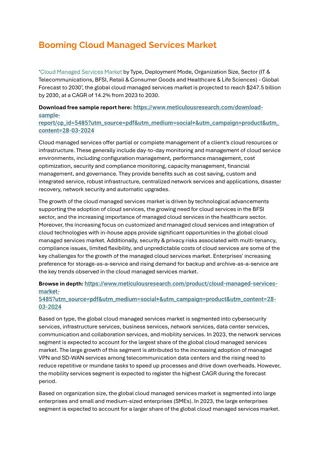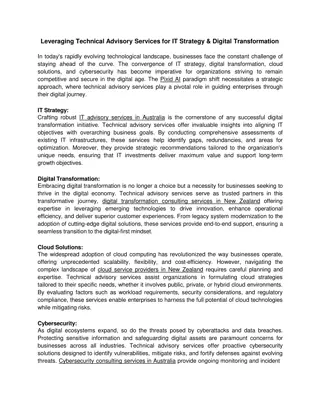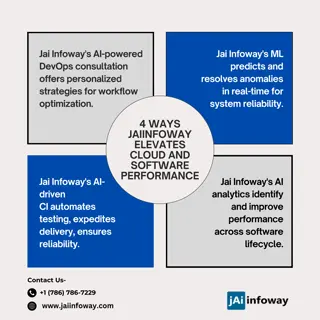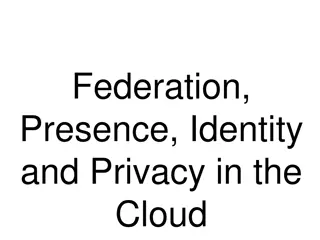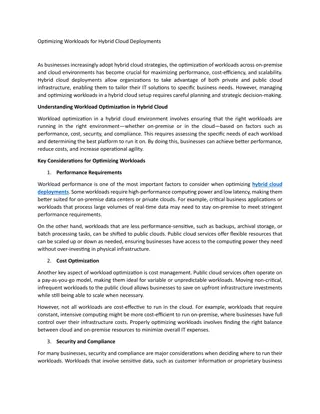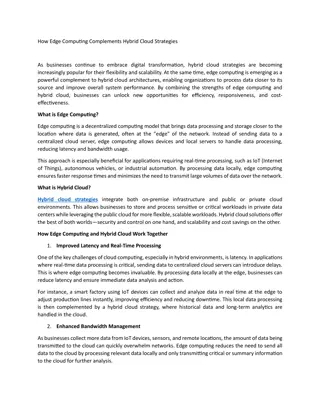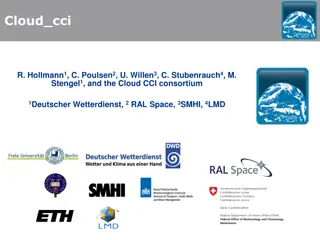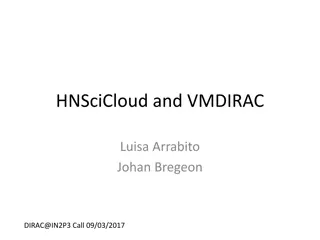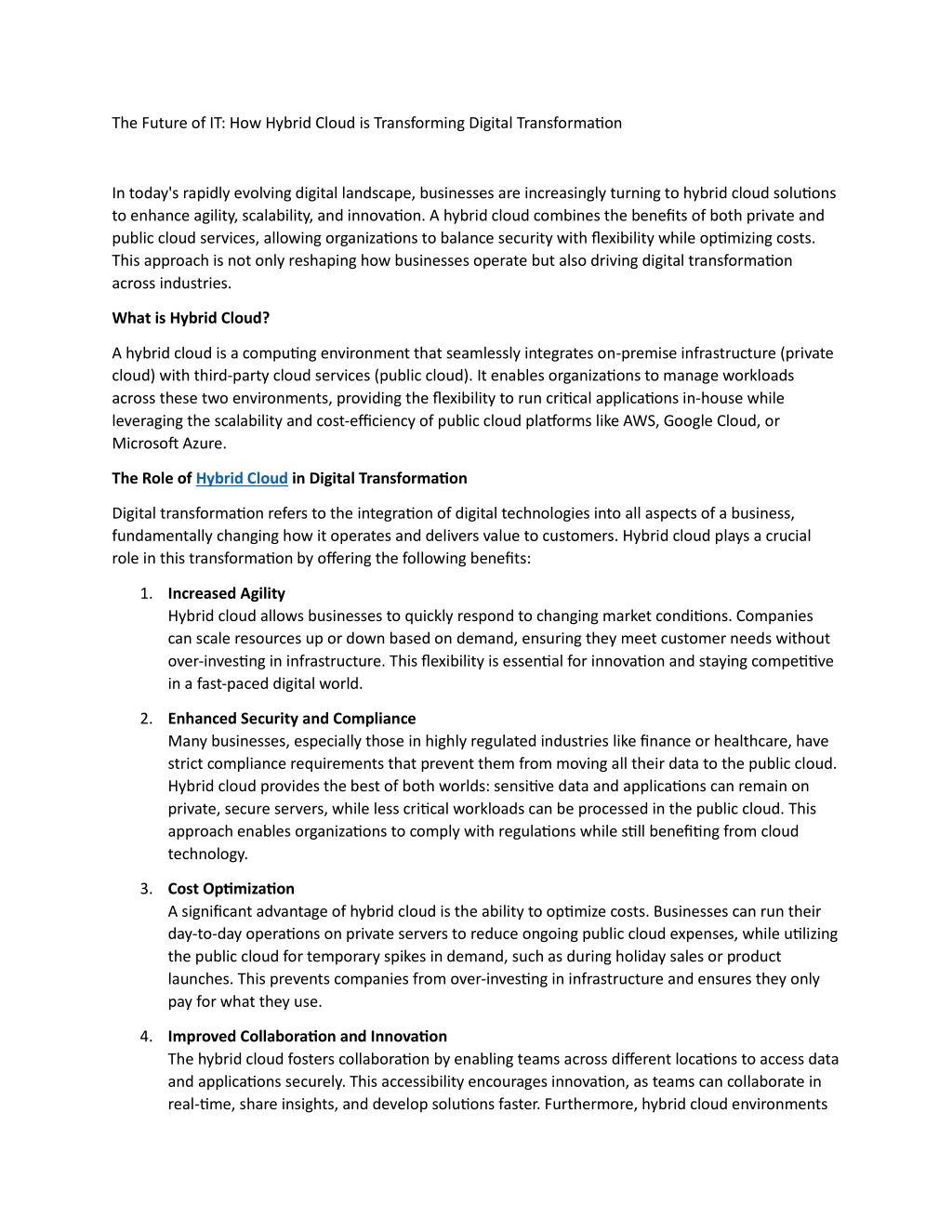
The Future of IT How Hybrid Cloud is Transforming Digital Transformation
A hybrid cloud combines the benefits of both private and public cloud services, allowing organizations to balance security with flexibility while optimizing costs.
Download Presentation

Please find below an Image/Link to download the presentation.
The content on the website is provided AS IS for your information and personal use only. It may not be sold, licensed, or shared on other websites without obtaining consent from the author. Download presentation by click this link. If you encounter any issues during the download, it is possible that the publisher has removed the file from their server.
E N D
Presentation Transcript
The Future of IT: How Hybrid Cloud is Transforming Digital Transformation In today's rapidly evolving digital landscape, businesses are increasingly turning to hybrid cloud solutions to enhance agility, scalability, and innovation. A hybrid cloud combines the benefits of both private and public cloud services, allowing organizations to balance security with flexibility while optimizing costs. This approach is not only reshaping how businesses operate but also driving digital transformation across industries. What is Hybrid Cloud? A hybrid cloud is a computing environment that seamlessly integrates on-premise infrastructure (private cloud) with third-party cloud services (public cloud). It enables organizations to manage workloads across these two environments, providing the flexibility to run critical applications in-house while leveraging the scalability and cost-efficiency of public cloud platforms like AWS, Google Cloud, or Microsoft Azure. The Role of Hybrid Cloud in Digital Transformation Digital transformation refers to the integration of digital technologies into all aspects of a business, fundamentally changing how it operates and delivers value to customers. Hybrid cloud plays a crucial role in this transformation by offering the following benefits: 1.Increased Agility Hybrid cloud allows businesses to quickly respond to changing market conditions. Companies can scale resources up or down based on demand, ensuring they meet customer needs without over-investing in infrastructure. This flexibility is essential for innovation and staying competitive in a fast-paced digital world. 2.Enhanced Security and Compliance Many businesses, especially those in highly regulated industries like finance or healthcare, have strict compliance requirements that prevent them from moving all their data to the public cloud. Hybrid cloud provides the best of both worlds: sensitive data and applications can remain on private, secure servers, while less critical workloads can be processed in the public cloud. This approach enables organizations to comply with regulations while still benefiting from cloud technology. 3.Cost Optimization A significant advantage of hybrid cloud is the ability to optimize costs. Businesses can run their day-to-day operations on private servers to reduce ongoing public cloud expenses, while utilizing the public cloud for temporary spikes in demand, such as during holiday sales or product launches. This prevents companies from over-investing in infrastructure and ensures they only pay for what they use. 4.Improved Collaboration and Innovation The hybrid cloud fosters collaboration by enabling teams across different locations to access data and applications securely. This accessibility encourages innovation, as teams can collaborate in real-time, share insights, and develop solutions faster. Furthermore, hybrid cloud environments
support emerging technologies like artificial intelligence (AI), machine learning (ML), and Internet of Things (IoT), which are critical drivers of innovation in today s digital era. Key Challenges in Adopting Hybrid Cloud While hybrid cloud offers numerous benefits, its implementation comes with challenges: 1.Integration Complexity Managing both on-premise and cloud-based systems can be complex, especially when ensuring smooth data transfers between environments. Organizations need robust tools and strategies to integrate their hybrid environments effectively. 2.Data Management and Security Data movement between private and public clouds requires careful planning to ensure security, privacy, and regulatory compliance. Companies must implement strong security protocols to protect sensitive information as it moves between environments. 3.Skill Gap The shift to a hybrid cloud strategy often requires new skills and expertise. Organizations may need to invest in training or hire new talent to manage hybrid cloud environments efficiently. The Future of Hybrid Cloud in Digital Transformation As digital transformation accelerates, hybrid cloud is poised to play an even greater role in shaping the future of IT. Businesses will continue to adopt hybrid cloud strategies to support AI, IoT, and big data analytics, driving innovation across industries. Moreover, advancements in automation and containerization technologies, such as Kubernetes, will make managing hybrid cloud environments easier, further streamlining operations and reducing complexity. Conclusion Hybrid cloud is more than just a trend it s a critical enabler of digital transformation. By combining the best features of private and public cloud solutions, hybrid cloud allows businesses to remain agile, secure, and cost-effective. As the future of IT continues to evolve, hybrid cloud will play a pivotal role in driving innovation, enhancing customer experiences, and maintaining a competitive edge in the digital marketplace. Businesses that embrace hybrid cloud will be well-positioned to thrive in the era of digital transformation. Read More: https://techhorizonsolutions.blogspot.com/2024/09/the-future-of-it-how-hybrid-cloud- is.html

